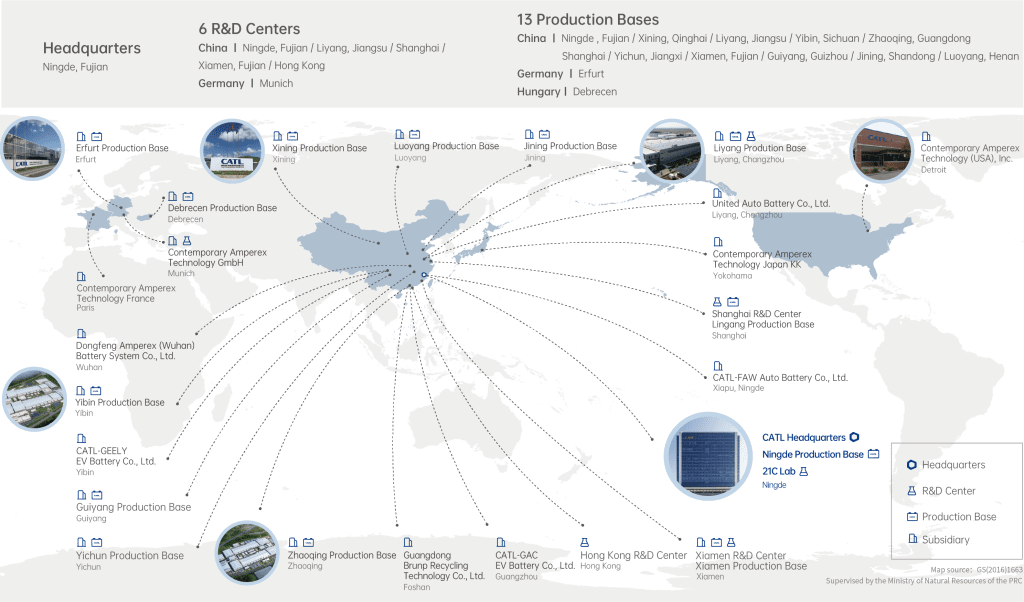At the BEYOND International Technology Innovation Expo held in Macau, Robin Zeng, Founder, Chairman and CEO of CATL (Contemporary Amperex Technology Co. Limited), stated that CATL is currently cooperating in the field of electric aircraft development. “We need to start with smaller aircraft, conducting test flights from 1-ton aircraft up to 8.8-ton aircraft. Currently, we have already conducted test flights with a 4-ton aircraft. However, achieving commercial use requires aircraft over 8 tons, so we still need to continue our efforts. We expect to launch the related applications around 2027 or 2028.”

The eVTOL (electric Vertical Take-Off and Landing) uses electric propulsion, avoids the advantages of American and European conventional aerospace propulsion engines. The core technologies (electric motors, batteries, flight control, and autonomous piloting) are more closely related to the advancements in electric vehicles and unmanned aerial vehicle technologies. According to Huatai Securities Research, due to the relatively high proportion of the three major systems in the global aviation market, with the continuous development of the global VTOL market, the market scale of the three major systems is expected to expand, providing significant future space for growth.

For the aviation industry, the importance of electrification cannot be overstated.
The international organization “Air Transport Action Group” released its “2050 Roadmap,” indicating that electric aircraft may be gradually introduced after 2025.
Moreover, the need for sustainable fuel aircraft to become electrified is quite urgent. Given the currently low supply and high cost, the entire industry chain for sustainable aviation fuel is bound to undergo significant changes. The reduction in CO2 emissions solely from sustainable aviation fuel is limited; other measures are needed to achieve net-zero emissions in aviation. Regardless of whether the mainstream aviation fuel in the future is sustainable aviation fuel, hydrogen, or electricity, developing technologies to increase the rate of electrification is essential.
However, the current application of aircraft electrification is still in its early developmental stages. This involves not only policy constraints like aviation control and airworthiness certification but also a series of technical bottlenecks.
Take electric aircraft, for example. Due to their application scenarios and range characteristics, they demand higher energy density and discharge power. The discharge rate requirement is at 5C or above, and the energy density threshold is over 400Wh/kg. Meeting these technical requirements, while also ensuring safety, cycle life, and cost efficiency, exceeds the current technological limits of the battery industry chain.
Currently, the theoretical energy density of artificial graphite is only 372mAh/g, and battery charge-discharge rates are typically below 4C.
In essence, the race towards aviation electrification is a race for breakthroughs in cutting-edge battery technology.
The aviation electrification market is driving a new wave of technological transformation and bringing enormous market potential. Represented by eVTOL, due to their fast, efficient, and versatile nature, they are creating new growth points in the low-altitude economy and attracting numerous battery manufacturers to engage in industrialization and technological breakthroughs.
For instance, CALB (China Aviation Lithium Battery) has closely partnered with XPeng Motors to develop the new 9-series high-nickel/silicon system batteries for low-altitude travel, achieving significant improvements in lightweight and safety performance while ensuring high power and fast-charging capabilities.
In the eVTOL market, Farasis Energy has deeply collaborated with leading overseas companies and delivered products, securing domestic science and technology appointments. Additionally, in response to interactive platform queries, the company stated that their next-generation semi-solid-state products, with higher energy density, are suitable for emerging low-altitude flight fields.
Gotion High tech Co Ltd has developed corresponding lithium battery products for eVTOL applications. Their next-generation cell products, with high energy density, high power, and high safety advantages, can meet the power needs of eVTOL in terms of safety, energy density, and cycle life. Gotion High-Tech has also signed a strategic cooperation agreement with EHang to jointly develop power cells, battery packs, energy storage systems, and charging infrastructure for eVTOL.
EVE Energy has been collaborating with foreign companies in the eVTOL battery field for three years, having delivered A-sample products and assisted customers in completing relevant aviation system certifications.
Greater Bay Technology has reached a strategic cooperation with EHang to jointly develop the world’s first ultra-fast charging/extreme charging battery solution for eVTOL aircraft, and to co-build ultra-fast charging piles and stations.
ZENERGY has targeted the eVTOL market by launching high-energy-density batteries with 320Wh/kg, capable of meeting 20% SOC, 12C high-rate discharge, and 5C constant current high-rate discharge.
References:
https://www.beyondexpo.com/
https://www.chinadaily.com.cn/a/202307/20/WS64b9275aa31035260b81798e.html
Leave a Reply